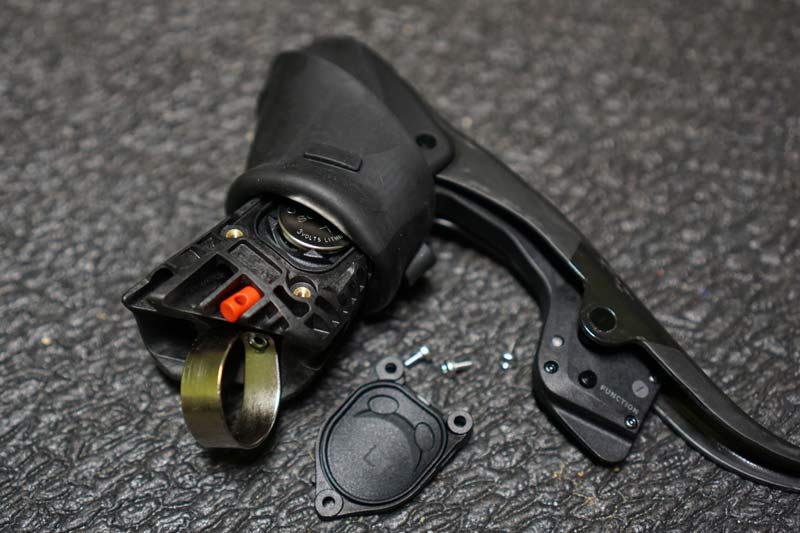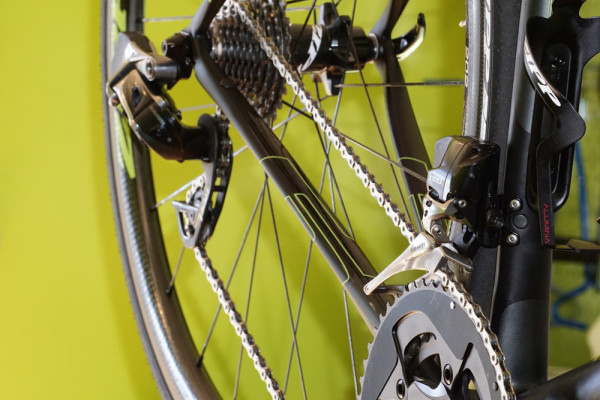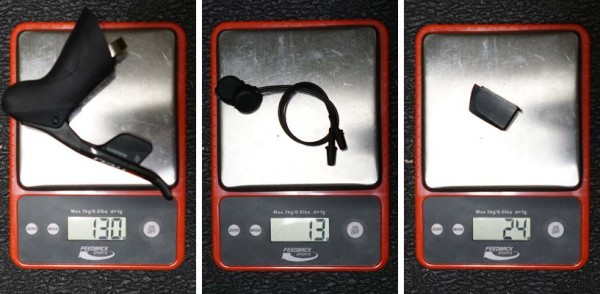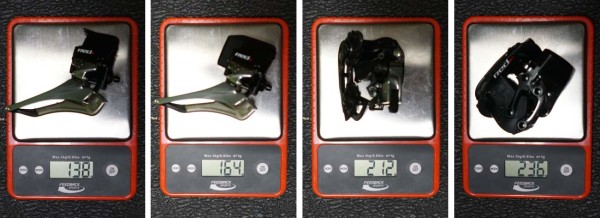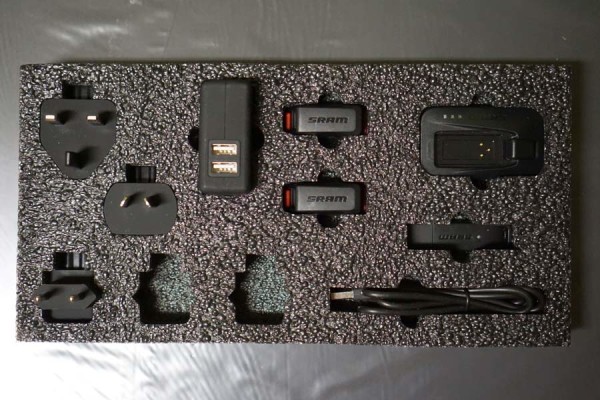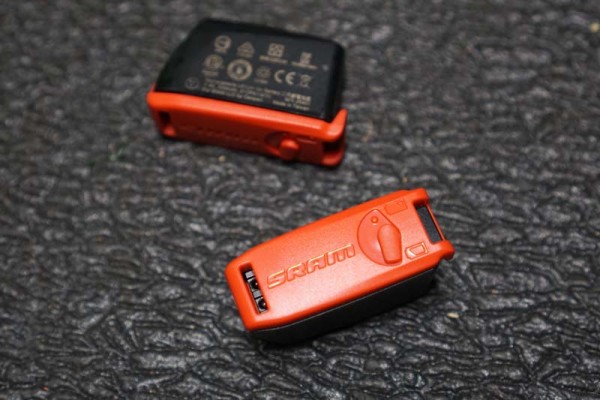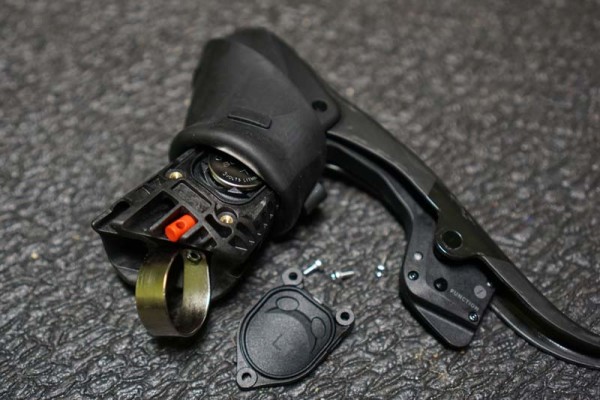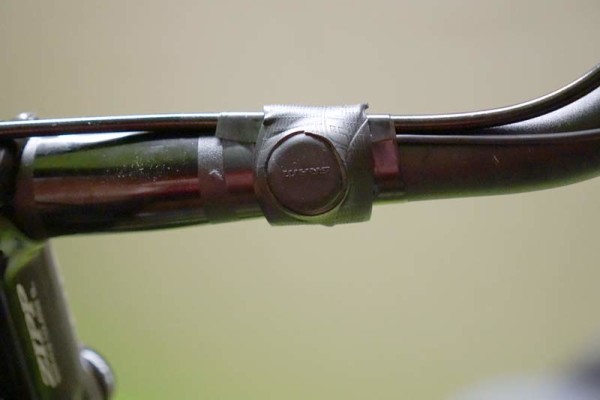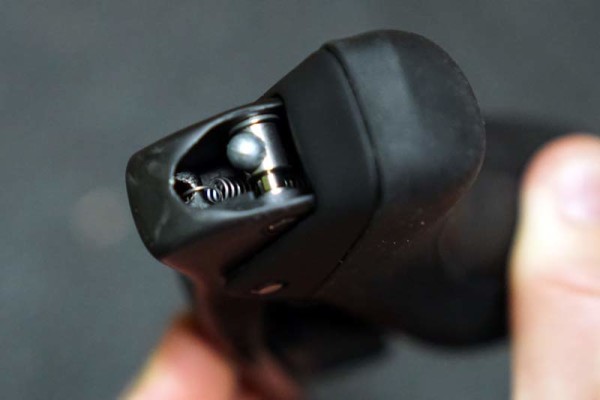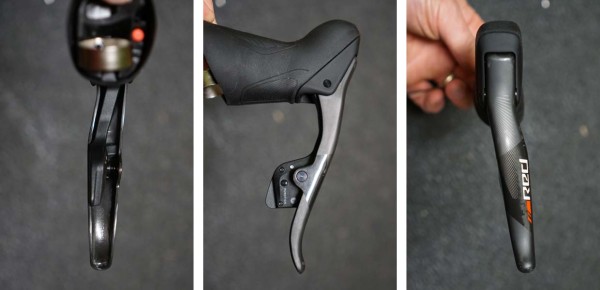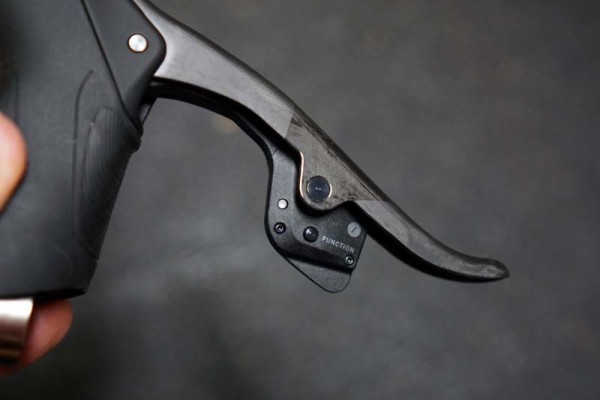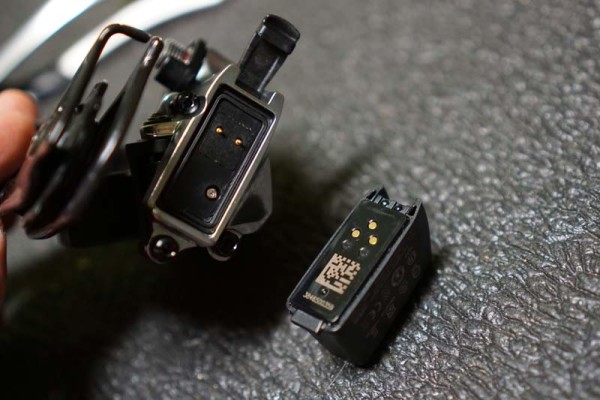When we attended the official SRAM Red eTap launch last fall, we provided an in-depth look at the design and development process and first impressions.
Now, they’re closer to production, with an initial run of “P1” units ready for use in the wild. The “P1” designation, as explained by SRAM’s technical marketing manager Nate Newton, means they’re “the final preproduction run”. The idea with the P1 run is that everything: tooling, production lines, parts, are identical to production, but everything gets checked over and allocated internally rather than sold to customers.”
So, that’s what we’ve got here, in for long term testing and mounted to a Cannondale SuperSix EVO with SRAM Red 22, a Quarq power meter and Zipp 202 wheels and tires. Of course, we promptly pulled the eTap bits off and threw ’em on the scale…
We put the parts on the scale at the launch event, too, which includes the Blip Box controller for TT/triathlon bikes. Here, on our test bike and our scale, were the standard road parts:
- Shifter w/ coin cell battery installed – 130g (260g/pair)
- Blips (pair) – 13g
- Battery – 24g
- Front Der. (w/o battery) – 138g
- Front Der. (w/ battery) – 164g
- Rear Der. (w/o battery) – 212g
- Rear Der. (w/ battery) – 236g
That’d put the total weight for shifting parts on a bike using two Blips at 673g. Here’s how that stacks up against the competition’s electrical parts (using actual weights for Shimano and claimed/actual weights for Campagnolo):
| RED eTap | Dura-Ace Di2 | Super Record EPS | |
| Shifter | 260g | 230g | 265g |
| Front Der. | 164g | 107g | 133g |
| Rear Der. | 236g | 213g | 199g |
| Int. Battery | — | 56g | 130g |
| TOTAL | 660g | 606g* | 727g* |
*Keep in mind, you’ll be adding a 22-50 grams of wiring and junction boxes, too, which puts Shimano very close to SRAM’s system weight. Campy’s internal battery is larger than Shimano’s and contains a good portion of the wiring, hence the heavier weight. You can find pricing here.
UPDATED: Final consumer packaging may vary from what’s shown here, but you’ll get a dual USB wall plug, charging cradle, USB cable, battery cover and instructions when you buy the whole group. Complete bikes will include a single charging cradle, but an additional cradle will be available separately. SRAM’s rep says they’ll charge faster with just a single cradle plugged in at a time. At launch, it’ll only be sold as a complete group and include that single charger. As parts start selling individually, the charging cradle will also be an individual package.
During transport, it’s best to remove the batteries since motion tends to keep the units “awake”. The battery covers have a handle little switch that lets you mark them as charged or not, so you won’t ever be wondering which ones are ready to go, and which will leave you high and dry. SRAM claims 60 hours of ride time per charge.
The shifters use a standard coin cell battery with a rubber-lined cover plate to keep moisture out. These should last you about two years.
Each shifter has two Blip ports. Shown above is the standard configuration with a single set installed and a red plug covering the second port. The wires have a red O-ring to keep moisture from entering through the port. On TT/triathlon bikes, the Blip Box replaces the standard shifter levers and provides a short and long set of Blips to reach the ends of the aero extensions and the bullhorn handlebars.
Blips can be mounted anywhere their wires will reach, and you’ve got four lengths to choose from (150, 230, 450 and 650 millimeters). SRAM sent the test bike with one pair installed on the bottom of the handlebar, but we’ll be moving it slightly to play with ergonomics.
The brake levers have a small return spring in them to assist the rim caliper in keeping the cable taut, the first time they’ve put it in a lever body that didn’t also have a mechanical shifter paddle. Without mechanical shifting or hydraulic braking internals, the lever bodies are thinner than other RED units, making them very comfortable to grip when standing and grinding through a climb or sprint.
The rest of the ergonomics are familiar, sharing the basic lever form factor with the rest of the SRAM family.
The shift paddle is large but doesn’t interfere with finger movement underneath. The Function button is used to pair the shifters with the rear derailleur and make micro adjustments on the rear derailleur.
A rubber seal surrounds the battery’s contact points on the derailleurs. The third contact point on the battery is for communicating with the charger to ensure proper charging. Both front and rear use the same type of battery, so you can swap them back and forth…no need to keep track of which goes where.
The first rides on home roads felt just as good as our first rides near their German R&D headquarters. Shifting is precise and intuitive, ushering in a new (and arguably much better) interface between rider and bike. Left to shift up the cassette, right to go down it…both to shift front. It really couldn’t be easier and takes all of two minutes for the brain to retrain itself. In fact, I anticipate having a harder time going back to my Di2 or EPS bikes (which already operate opposite each other!) than this one. I know, I know #firstworldproblems. The Cannondale they sent it on is no slouch, either, nor are the Zipp 202’s, so long term testing should be doubly fun. And I’m already scheming a few nifty things to experiment with…
